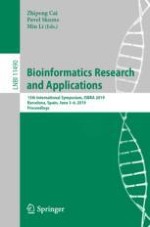2019 | OriginalPaper | Buchkapitel
Deep Learning and Random Forest-Based Augmentation of sRNA Expression Profiles
verfasst von : Jelena Fiosina, Maksims Fiosins, Stefan Bonn
Erschienen in: Bioinformatics Research and Applications
Aktivieren Sie unsere intelligente Suche, um passende Fachinhalte oder Patente zu finden.
Wählen Sie Textabschnitte aus um mit Künstlicher Intelligenz passenden Patente zu finden. powered by
Markieren Sie Textabschnitte, um KI-gestützt weitere passende Inhalte zu finden. powered by
